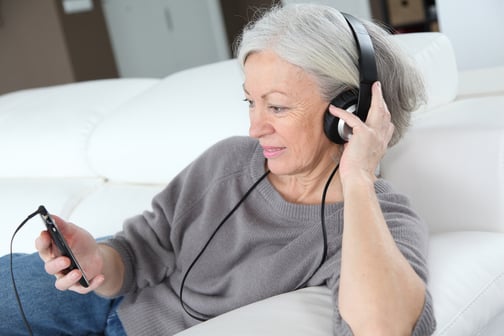Updated: Nov. 17, 2020
There is no health without mental health. Those seven words are the first you see on the World Federation for Mental Health’s (WFMH) website. Oct. 10 is World Mental Health Day and the theme this year is Mental Health for All: Greater Investment, Greater Access.
For certain, 2020 has already become synonymous with bad news and a vibe of overall negativity. Some have even referred to negative situations or outcomes as a “twenty twenty,” giving this unprecedented year a unique personality and a descriptive power all its own. Some have even gone so far as to call it the worst year ever. It’s even made its way into our vernacular.
“Hi John, how was your weekend?”
“Not great. It was a real 2020.”
But even before 2020 reared up its evil head and declared it will be a year for the ages, people who needed mental health services and treatment faced internal and external barriers in accessing it. Two of the top barriers for people are and always have been fear and shame — fear of being labelled as mentally ill and feeling ashamed or weak because they sought help. These barriers, along with others like it's too expensive, no insurance coverage or its hard work just getting to the office of a therapist or counselor, are being removed.
Therapy From Your Own Couch
Our new normal with quarantining, lockdowns, and the lack of control can exacerbate mental health. Coping and assimilating these uncharted times, while also battling mental illness is beyond challenging, requiring proactive skills and access to help.

World Mental Health Day is Oct. 10. Access to mental health services
has never been simpler with the advent of telehealth and the smartphone!
While we are all trying to rediscover what “normal” is, even folks without a history of mental health challenges are in need of some help these days. Those who have needed mental health access in the past need it more now than ever. Telehealth can help. Also known as telemedicine or virtual care, telehealth can deliver therapy and behavioral health treatment to those in need from the safety and comfort of their own couch. In fact, the New York Times reported findings from a recent American Psychological Association survey showing 75 percent of clinicians “are doing only teletherapy,” while another 16 percent use a hybrid of virtual and in-person sessions.
Greater Investment
The World Health Organization (WHO) reported in its “Mental Health Atlas 2014” survey, that on average, governments around the world spend just three percent of their health budgets on mental health. The WHO has also reported that investing in depression and anxiety provides a four-fold ROI. Consider this, mental illness and behavioral health issues result in a loss of $193,000,000,000 in annual income in the U.S. We cannot ignore mental illness.
Investment into the Infrastructure to accommodate rural areas needs to improve, along with patient access to compatible and reliable devices, and this is beginning to happen. The Federal Communications Commission (FCC) has stepped up to the plate, and in this age of COVID-19 invested $200M to improve telehealth access and programs across the country. Also, in August 2020, the FCC, U.S. Department of Health and Human Services (HHS), along with the U.S. Department of Agriculture signed a Memorandum of Understanding to work together on the Rural Telehealth Initiative. It’s a joint effort of these agencies to “address health disparities, resolve service provider challenges, and promote broadband services and technology to rural areas in America.” An investment that will definitely benefit those seeking behavioral healthcare.
Greater Access
Many people who suffer from mental illness will seek help in Emergency Departments because they couldn’t access or didn’t get the help they needed earlier. Throw a pandemic into the mix, and the situation becomes even more difficult, perhaps dangerous. Even before the pandemic, treating behavioral health patients in the ED was not efficient for the patient or the hospital.
The FCC created The Connect2HealthFCC Task Force, which is “exploring the intersection of broadband, advanced technology and health, engaging with a wide array of stakeholders, and further charting the broadband future of health care—serving as an umbrella for all FCC health-oriented activities to help enable a healthier America.” Their motto is:
Everyone connected…
to the people, services and information they need to get well and stay healthy.
One of the most important and impactful events during the COVID-19 pandemic has been the Centers for Medicare and Medicaid Services (part of HHS) waiver of previously restrictive telehealth regulations. These waivers now clear the obstacles that previously inhibited providers and patients from connecting through virtual care. The HHS website states, “We encourage healthcare providers to adopt and use telehealth as a way to safely provide care to your patients in appropriate situations, including: routine health care, like wellness visits; medication consultation; dermatology (skin care); eye exams; nutrition counseling; and mental health counseling.”
All this is good news, and access to care has expanded, but measures like simple two-way video solutions alone won’t be able to carry behavioral telehealth forward. As the need and demand for virtual care access grows, health systems and hospitals will need more than a two-way video platform to deliver quality healthcare. They’ll need a purpose-built virtual care platform that integrates with their EMR, is HIPAA compliant, secure and can accommodate all their clinical workflows. Improved access is good, but improved access the right way is even better.
Easterseals Michigan
At the beginning 2020, Easterseals Michigan — a leading non-profit provider of services for individuals with mental illness, emotional impairments, autism, developmental disabilities and other special needs — implemented the eVisit Virtual Care platform to provide virtual behavioral health for its clientele. Easterseals is leveraging eVisit to supplement in-office visits and create more ways to provide care and support and engage with their patients. Like the rest of the world, the pandemic severely affected Easterseal’s ability to see their clients in-person, and they had to rapidly scale their virtual care offering to safely accommodate the increased demand for their services. eVisit is helping this organization in its mission and continues to enable virtual behavioral health visits for their clients.
Here is a link to a blog post that identifies six health systems with excellent mental health blogs. Another great blog, in our opinion, is The Virtual Care Blog ™ Subscribe here:




